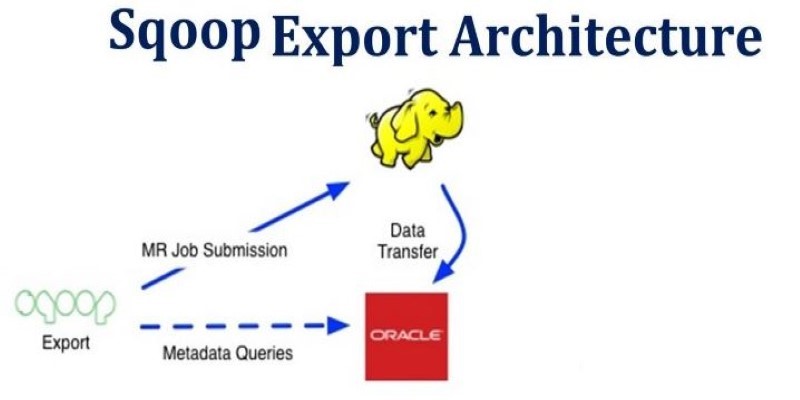Advertisement
In finance, numbers have always taken centre stage. But today, they're not enough on their own. Machine learning is shaping how institutions make decisions—faster, more data-driven, and often more complex. At the core of this shift is the Director of Machine Learning, a role that blends technical knowledge, business sense, and the ability to choose what matters most. In this finance-focused part of the series, we look at how this position functions in a sector built on rules and risk. The right data, model, and timing can now make all the difference.
Finance runs on precision, timing, and insight. A Director of Machine Learning is expected to turn large volumes of data into decisions that carry real financial weight. It’s not just about building models—it’s about choosing the right problems to solve and making sure the solution holds up under pressure.

Projects in finance often involve high stakes, including market predictions, fraud detection, loan approvals, and investment strategies. While the techniques aren't new, the scale and speed are. Models must work in real time, adapt quickly, and comply with industry rules.
A strong Director in this space avoids unnecessary complexity. They look for tools that support clear, stable outcomes. Whether managing credit risk or optimizing trading, they balance innovation with caution. The goal is practical impact—not flashy experiments.
Machine learning doesn’t exist in a vacuum. It must be usable, reliable, and legally sound. The Director takes responsibility for the entire life cycle—from data quality to deployment—and makes sure each step connects to something the business cares about.
Finance is a risk-aware industry, and machine learning changes how that risk is measured. However, the models are only as reliable as the data that feeds them. In many financial settings, that data is messy, incomplete, or influenced by regulation.
Here, the Director's role is part analyst, part strategist. They make sure that machine learning systems don't just perform well under normal conditions but remain stable during outliers—because in finance, outliers often carry the most weight.
Accuracy isn’t enough. Explainability, reliability, and compliance matter just as much. A model that can’t be explained might be impressive, but it’s not always usable in environments where regulations require clear reasoning.
Often, simpler models win. In finance, interpretability is key, especially when decisions affect customers or move money. The Director often favours models that are slightly less accurate but more robust and defensible.
They also push for good monitoring practices. Financial systems change—consumer behaviour shifts, regulations update, and markets fluctuate. A model trained on old data might fail quietly if it's not tracked carefully. This role ensures that systems evolve with the data they depend on.
The Director of Machine Learning bridges research and operations. They know how to interpret raw results and link them to measurable business goals. Whether it’s improving underwriting or trade automation, success comes from applying the right model to the right task.

This role often shapes how teams are formed. A mix of data scientists, software engineers, and domain experts work together from the start. In finance, technical and business teams can’t afford to be siloed—models must fit into live systems and align with business needs from day one.
Hiring reflects this blend. A top-notch team includes not only people who know the math but also those who understand how small decisions can have major financial consequences. The Director looks for people who are curious, fast learners, and able to operate under pressure.
They also define how success is measured. That means more than model accuracy—it includes stability, clarity, and the ability to handle edge cases. Models must produce results that can be trusted by both business leaders and compliance teams.
In terms of strategy, the Director helps set long-term direction. They assess which tools are production-ready and which are still unproven. Finance isn’t always the place to experiment. It values careful testing and structured rollout more than bold moves.
Finance is tightly regulated, and that affects every part of the machine-learning process. A Director in this space must understand not only the models but the policies that guide them. Whether it's credit scoring, asset management, or fraud detection, these models must be auditable and justifiable.
Transparency matters. Regulatory bodies need to know why a decision was made, not just that the system made one. Directors are often tasked with making complex technical choices clear to non-technical teams, such as risk officers, compliance reviewers, or executives.
Privacy also plays a large role. Financial institutions handle sensitive personal data, and the Director ensures systems follow legal standards for security and consent. It’s not just about protecting the data but showing that the protection is working as intended.
Internally, trust is just as important. Business leaders must believe that the systems in place are stable, fair, and current. A Director of Machine Learning doesn’t just build models—they maintain them, test them, and update them when needed. That means regular evaluation, retraining, and clear documentation.
Markets shift fast. A model that worked six months ago may start showing bias or breaking down. Without someone watching, these issues can go unnoticed until they cause major problems. The Director keeps a steady hand, making sure systems adapt and stay relevant.
The Director of Machine Learning in finance plays a key role in shaping how modern institutions think and act. It’s not a purely technical position—it’s a decision-making role that touches data, business, and risk. What makes this position unique is the ability to simplify the complex and build systems that last. In a space where small errors can have big consequences, success comes from measured decisions, careful testing, and clear outcomes. This role isn’t about following trends—it’s about knowing what works and being able to prove it. The Director brings a mix of structure and foresight, making them essential to any financial team using machine learning.
Advertisement

Explore the top 11 generative AI startups making waves in 2025. From language models and code assistants to 3D tools and brand-safe content, these companies are changing how we create

How to Integrate AI in a Physical Environment through a clear, step-by-step process. This guide explains how to connect data, sensors, and software to create intelligent spaces that adapt, learn, and improve over time

Is the UK ready for AI’s energy demands? With rising power use, outdated cooling, and grid strain, the pressure on data centers is mounting—and sustainability may be the first casualty

How MobileNetV2, a lightweight convolutional neural network, is re-shaping mobile AI. Learn its features, architecture, and applications in edge com-puting and mobile vision tasks

How the ORDER BY clause in SQL helps organize query results by sorting data using columns, expressions, and aliases. Improve your SQL sorting techniques with this practical guide

Understand how GPT's decoder-only transformer works, its advantages, challenges, and why it is transforming the future of AI

How Amazon is using AI to fight fraud across its marketplace. Learn how AI-driven systems detect fake sellers, suspicious transactions, and refund scams to enhance Amazon fraud prevention

Looking for a reliable and efficient writing assistant? Junia AI: One of the Best AI Writing Tool helps you create long-form content with clear structure and natural flow. Ideal for writers, bloggers, and content creators

How Apache Sqoop simplifies large-scale data transfer between relational databases and Hadoop. This comprehensive guide explains its features, workflow, use cases, and limitations

Llama 3.2 brings local performance and vision support to your device. Faster responses, offline access, and image understanding—all without relying on the cloud

Know how to reduce algorithmic bias in AI systems through ethical design, fair data, transparency, accountability, and more

Learn everything about Stable Diffusion, a leading AI model for text-to-image generation. Understand how it works, what it can do, and how people are using it today